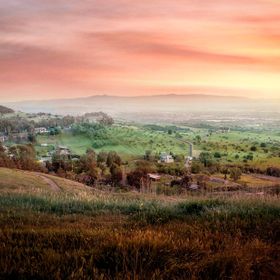

sandyseyecatcher
FollowGaleta Meadows during the moonrise
Galeta Meadows during the moonrise
Read less
Read less
Views
1263
Likes
Awards
Member Selection Award
Contest Finalist in Night And Rule Of Thirds Photo Contest
Peer Award
Outstanding Creativity
Absolute Masterpiece
Superb Composition
Top Choice
Magnificent Capture
All Star
Superior Skill
Top Ranks
Categories
Same photographer See allBehind The Lens
Discover more photos See all
Behind The Lens
Location
This photo was taken at the Anzo Borrego State Park, California. It's located between Temecula and San Diego.Time
It was taken at moon-rise around 10pm.Lighting
Originally we wanted to capture the milkyway but the moonrise got in the way, so we captured this instead. The lighting of the sculptures was done by "light-painting" with a regular torch (which involved me in black clothes running around the sculptures lighting them a few seconds at every angle). As the picture was created with long-exposure (20s), I am not visible.Equipment
We used a Canon 5d MKII on a tripod with a wide-angle lens (Rokinon 14mm).Inspiration
I saw a picture once of a metal dinosaur under the milky way. My husband and I love night photography, especially when interesting foreground is involved, and started to investigate where this images was taken. We live in Northern California and found out that these statures are in Southern California at Borrego Springs, only a 9 hour drive from us, so we went! And - it was sooo worth it, the sculptors of Ricardo Breceda are amazing. There are around 130 of different designs in the desert, known as Galleta Meadows: This one is called the "Scorpion and Locust" but there are also horses, turtles, dinosaurs, dragons and many more.Editing
In Adobe Camera Raw I added clarity to the image to bring out the stars and added a slight vignette to bring the viewer's eyes onto the sculptures.In my camera bag
For night-photography I either use my Canon 5d MKII or Canon 5DSR with a Rokinon 14mm/2.8 wide angle lens. Gloves that don't have fingertips are helpful when it's cold at night as you need to press the shutter, or even better, switching on a cable release. A torch is very useful for lighting up certain objects and the way to your location, especially if it's a bit of a walk.Feedback
Anybody who has ever done night photography knows: The distance at night seems different to the distance at day time. Everything at night seems further away, that's mostly because it's more of a struggle: It's colder, it's more windy and your hear weird noises that are spooky. So the more you research your location at daytime the easier it is to find your way around at night. Some of these sculptures are very visible during daytime, you see them right from the main street, yet at night they seem to have disappeared. So we drove around a lot and made mental points of other things that we found around the areas that we wanted to photograph: poles, rocks, strange trees (as the GPS coordinates didn't work in the desert). The shoot itself is easy: Camera on Tripod, long exposure (with a wide angle lens around 20-30 seconds as you don't want to see the stars trailing), manual focus (infinity minus a little bit), torch - if you want to light your objects meanwhile the long exposure. Don't change lenses in the desert, from my own experience I can tell you the sensor dust is very visible when you shoot anything with blue sky the next day :-).













































